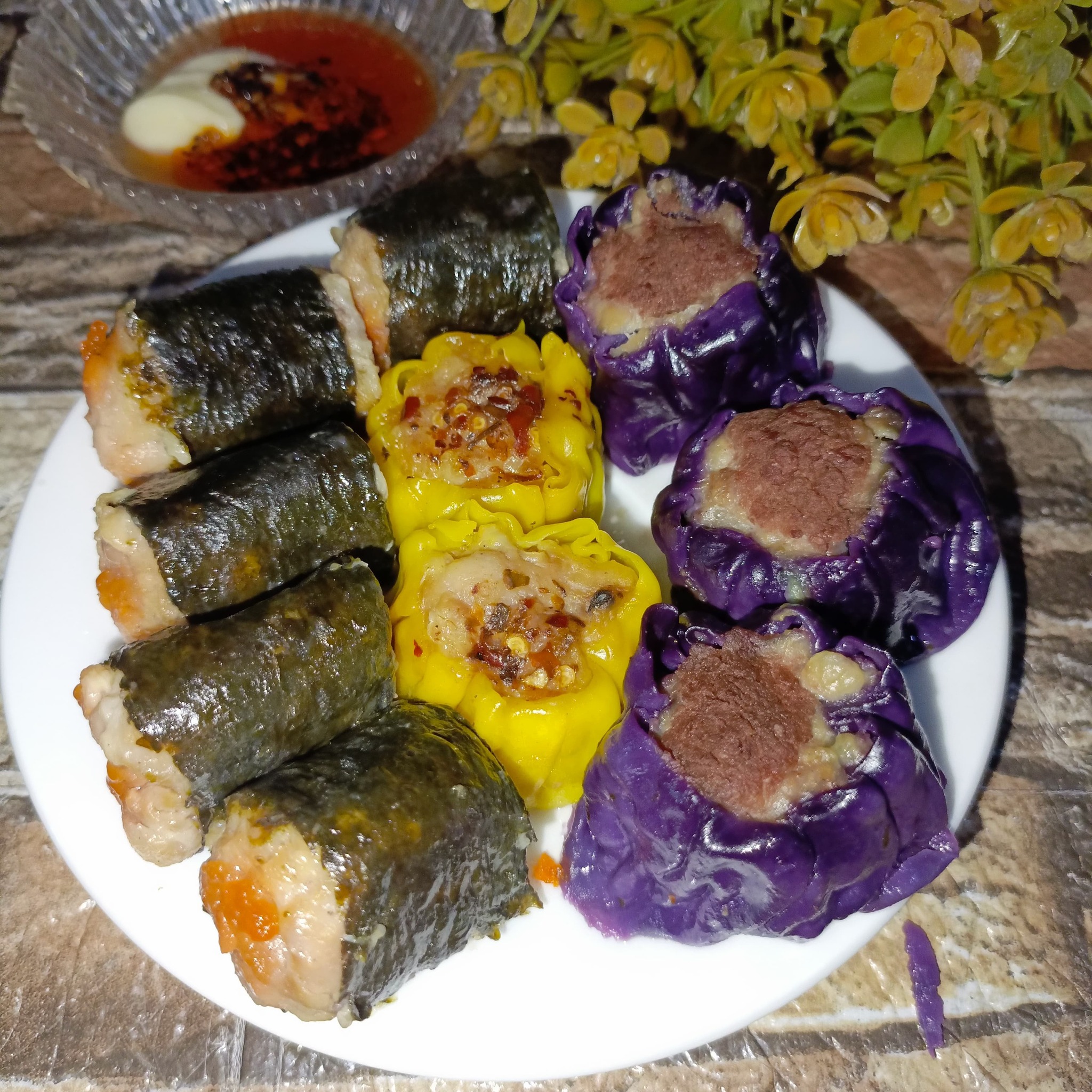Craving Dim Sum? Let’s Make Some at Home!
Dim sum. Just the words conjure up images of steaming bamboo baskets, filled with savory dumplings, fluffy buns, and all sorts of delightful treats. Going out for dim sum is fantastic, but what if you could enjoy those flavors in the comfort of your own kitchen? Making dim sum at home can seem daunting, but with a little guidance, it’s surprisingly achievable and incredibly rewarding. Get ready to roll up your sleeves and embark on a delicious adventure!
<!– 
Diving into the Delicious World of Dim Sum
Before we get cooking, let’s talk a little bit about what makes dim sum so special. Dim sum isn’t just one dish; it’s a style of Cantonese cuisine involving a variety of small, bite-sized portions served with tea. Think of it as a culinary tapas experience, perfect for sharing with friends and family.
<!– 
Understanding the Basic Types of Dim Sum
Dim sum comes in many forms, but some are more popular than others. Knowing the main types will help you choose a recipe and understand the process better:
- Dumplings (Jiaozi): Usually steamed or fried, with a thin wrapper and savory filling. Think har gow (shrimp dumplings) and siu mai (pork dumplings).
- Buns (Baozi): Soft, fluffy steamed buns filled with sweet or savory ingredients like char siu (barbecue pork) or custard.
- Rolls (Cheung Fun): Thin, delicate rice noodle rolls, often filled with shrimp, pork, or vegetables and drizzled with soy sauce.
- Other Treats: This category includes things like sticky rice in lotus leaf, chicken feet, and spare ribs.
<!– 
Essential Ingredients for Your Dim Sum Adventure
Stocking your pantry with the right ingredients is crucial for successful dim sum making. Here are some key players:
- Wheat Starch & Tapioca Starch: These are the secret to that translucent, slightly chewy dumpling wrapper.
- Ground Pork & Shrimp: Popular choices for fillings, offering a classic savory flavor.
- Soy Sauce, Sesame Oil, Rice Wine: Essential for seasoning and adding depth of flavor.
- Ginger & Garlic: Aromatic powerhouses that bring warmth and complexity to your fillings.
- Scallions: For a fresh, vibrant touch.
- Bamboo Steamers: The traditional method for cooking many dim sum dishes, giving them a unique texture and flavor. If you don’t have bamboo steamers, you can use a metal steamer basket inside a pot.
<!– 
Let’s Get Cooking: A Simple Siu Mai Recipe
Siu Mai, those open-topped pork dumplings, are a great starting point for beginner dim sum chefs. Here’s a simplified recipe to get you started:
<!– 
Siu Mai Ingredients:
- 1 pound ground pork
- 1/2 cup chopped shrimp
- 2 tablespoons soy sauce
- 1 tablespoon sesame oil
- 1 tablespoon rice wine
- 1 tablespoon grated ginger
- 2 cloves garlic, minced
- 1/4 cup chopped scallions
- 24 wonton wrappers
Siu Mai Instructions:
- Prepare the Filling: In a large bowl, combine the ground pork, shrimp, soy sauce, sesame oil, rice wine, ginger, garlic, and scallions. Mix well.
- Assemble the Siu Mai: Place a wonton wrapper in the palm of your hand. Spoon a generous amount of the pork mixture into the center. Gently pleat the edges of the wonton wrapper, leaving the top of the filling exposed.
- Steam the Siu Mai: Line a bamboo steamer with parchment paper or lettuce leaves. Arrange the siu mai in the steamer, making sure they are not touching.
- Cook the Siu Mai: Fill a pot with enough water to reach just below the steamer basket. Bring the water to a boil. Place the steamer basket over the pot, cover, and steam for 15-20 minutes, or until the pork is cooked through.
- Serve: Serve hot with soy sauce or your favorite dipping sauce.
<!– 
Tips and Tricks for Dim Sum Success
Here are a few extra tips to help you on your dim sum journey:
- Don’t overfill the dumplings: Overfilling can cause them to burst during steaming.
- Keep the wonton wrappers moist: Cover them with a damp cloth to prevent them from drying out and cracking.
- Experiment with fillings: Feel free to get creative and try different combinations of meats, vegetables, and seasonings.
- Practice makes perfect: Don’t be discouraged if your first attempt isn’t perfect. Keep practicing, and you’ll be a dim sum pro in no time!
<!– 
Your Dim Sum Adventure Awaits!
Making dim sum at home is a rewarding experience that allows you to customize flavors and enjoy fresh, delicious dishes. Don’t be afraid to experiment, have fun, and most importantly, enjoy the process. So grab your ingredients, gather your friends and family, and start steaming your way to dim sum bliss! Now that you’ve got this simple siu mai recipe down, why not explore other dim sum delights? Happy cooking!
<!– 
